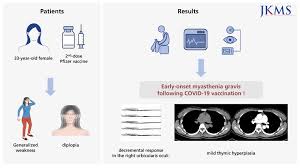Understanding Myasthenia Gravis: Symptoms, Treatments, and Research

Introduction
Myasthenia gravis (MG) is an autoimmune neuromuscular disorder that significantly affects the way muscles communicate with nerves. It is characterized by weakness and rapid fatigue of voluntary muscles and can substantially impact daily life. Understanding MG is becoming increasingly important as recent advancements in research and treatment options provide new hope for those affected by this complex condition.
What is Myasthenia Gravis?
Myasthenia gravis occurs when the body’s immune system mistakenly attacks the acetylcholine receptors at the neuromuscular junction, preventing effective communication between nerves and muscles. This results in muscle weakness that fluctuates with activity levels. Common symptoms include drooping eyelids, double vision, difficulty swallowing, and generalized muscle weakness.
Recent Developments and Treatment Options
Over recent years, significant strides have been made in the understanding and management of MG. The introduction of new therapies, including monoclonal antibodies like eculizumab (Soliris) and ravulizumab (Ultomiris), has transformed treatment protocols. These medications target specific aspects of the immune response, leading to improved muscle strength and a better quality of life for many patients.
Furthermore, the research community has identified genetic markers that may help predict disease progression and responses to treatments, allowing for a more personalized approach to management. Clinical trials continue to explore more effective therapies that would further enhance treatment options for patients.
Living with Myasthenia Gravis
Managing myasthenia gravis involves a combination of medication, lifestyle adjustments, and sometimes surgical intervention. Patients are encouraged to engage in physical therapy to maintain muscle strength and avoid overexertion. Regular consultations with healthcare providers specializing in neurology are crucial for monitoring the condition and adjusting treatment as needed.
Conclusion
Myasthenia gravis remains a challenging condition for many, but ongoing research and advancements in treatment are paving the way for improved management and outcomes. It is essential for individuals diagnosed with MG and their families to stay informed about new developments and to advocate for comprehensive care. As research continues to evolve, there is hope that better therapies will emerge, fostering a brighter future for those living with myasthenia gravis.








